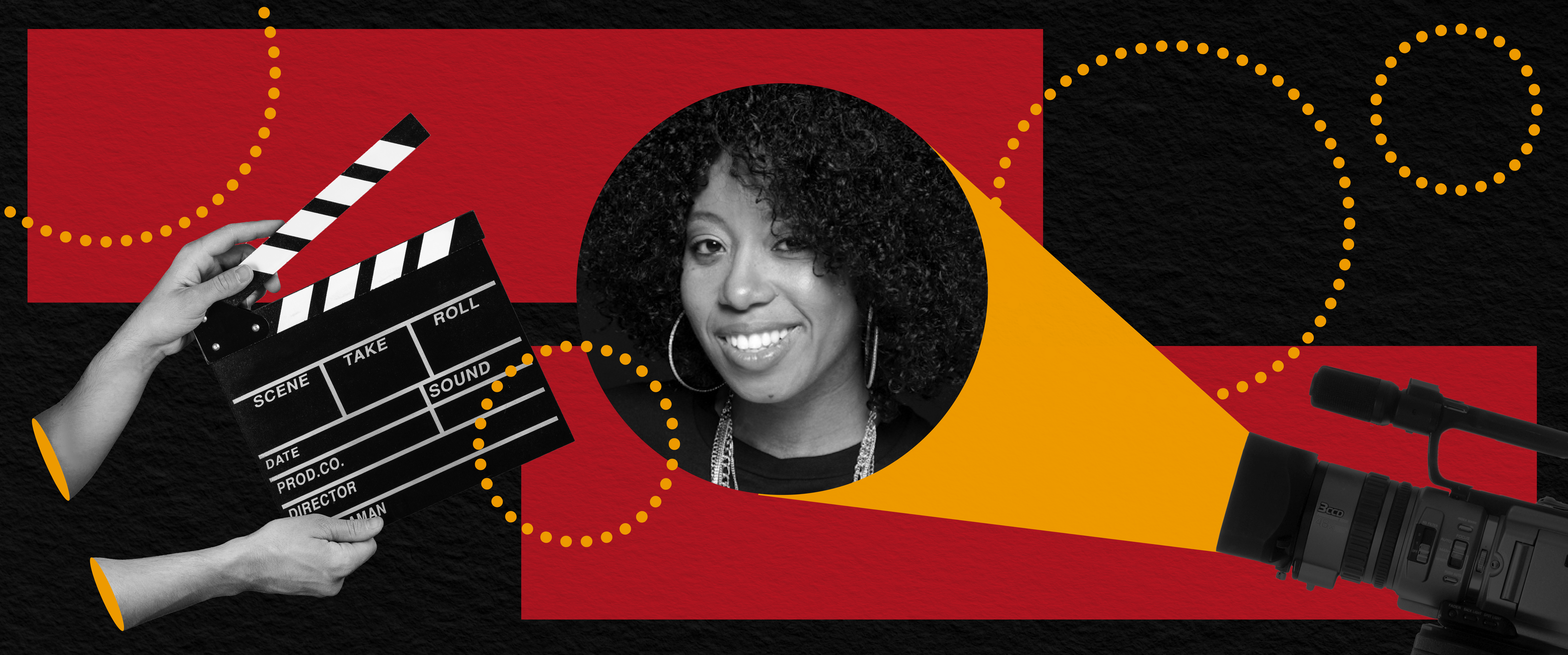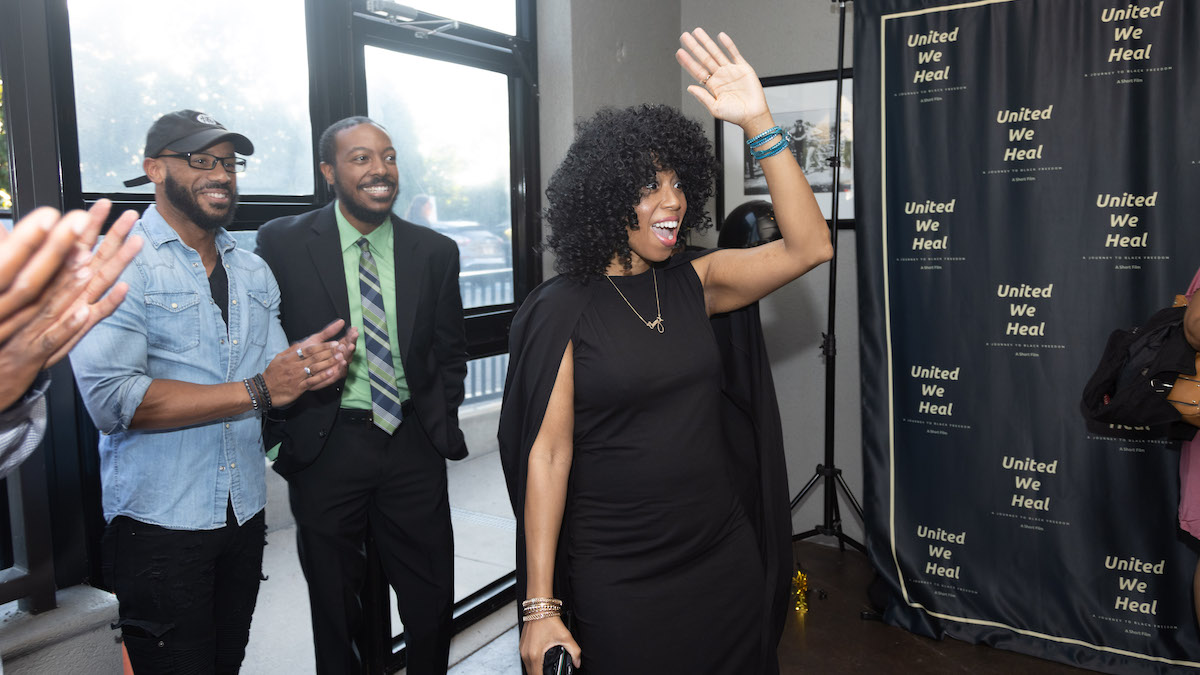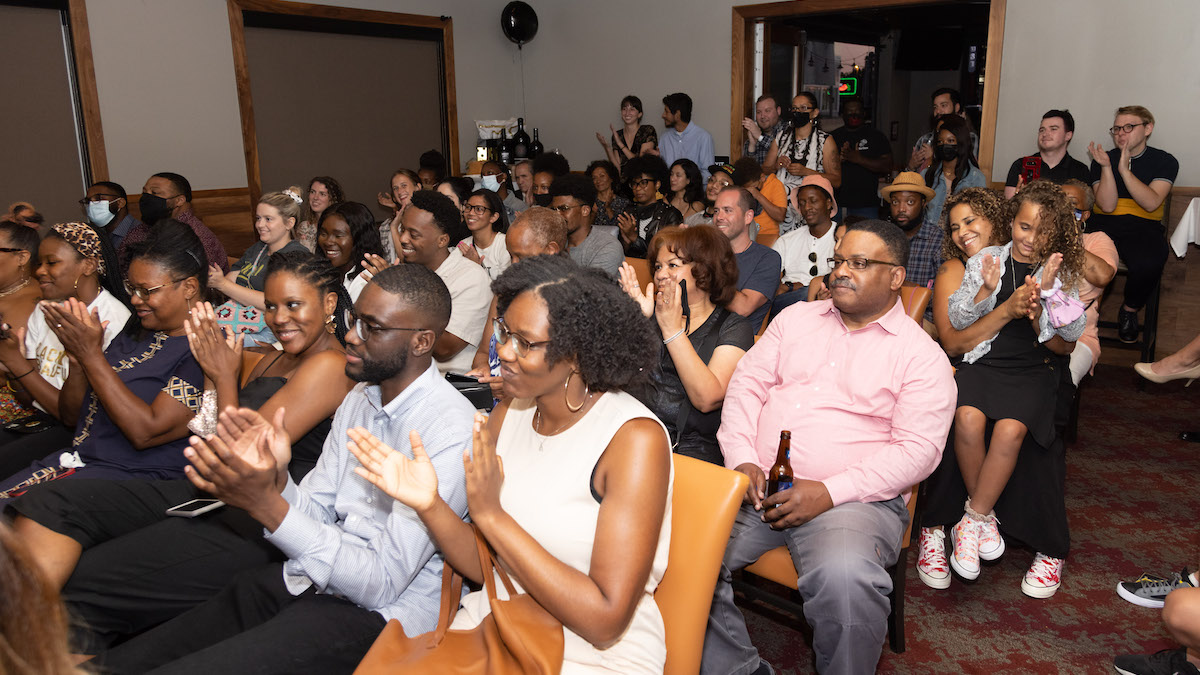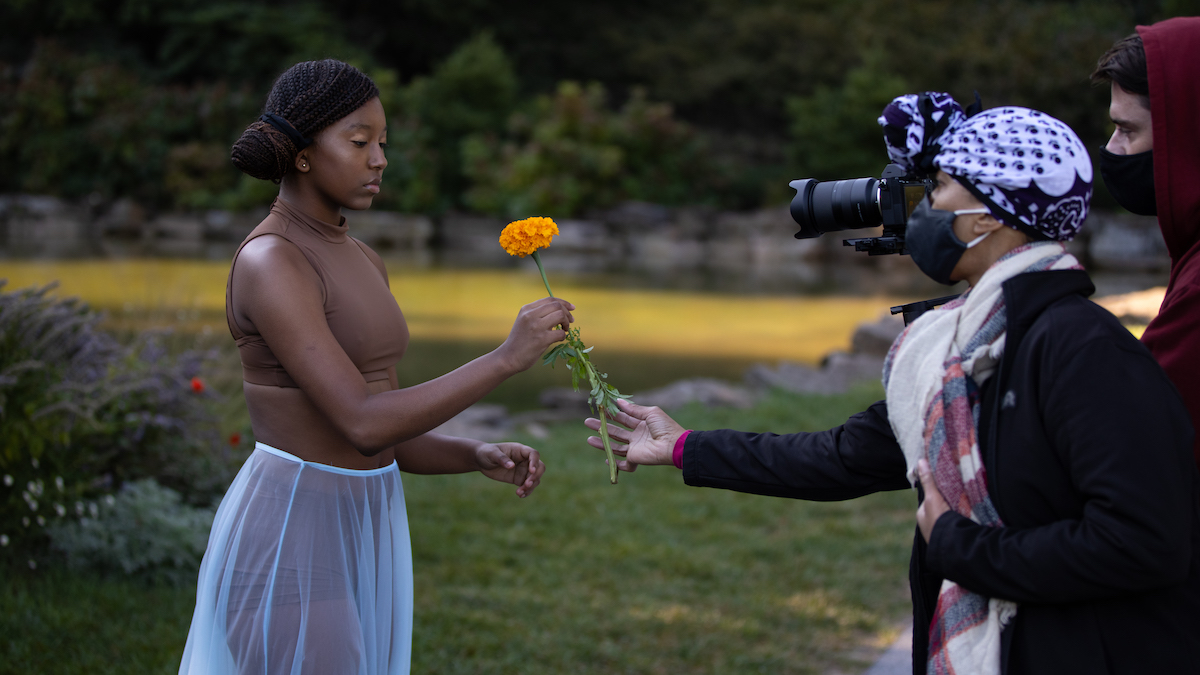Many producers in the video and film industry have to wear many hats. It takes a lot of moving parts to make a moving image. I wanted to sit down with a creative colleague and very good friend of mine to talk about the power of video and her journey in making her first social justice short film, United We Heal.
When I think of someone who wears many hats, I think of Ebony Roberts. She doesn’t just wear the hats—sometimes it feels as if she designs them, makes them, and then sells them. Ebony Renee Roberts is a filmmaker, associate producer at QVC, and an activist who I have been working with for several years now. Ebony and I met at QVC and immediately clicked and started collaborating on video projects. When it comes to getting things done, this is the woman I call.
Ebony enters the private screening for United We Heal
Colin: For the people who don’t know you, why don’t you tell me a little bit about yourself?
Ebony: Hello! My name is Ebony Renee Roberts. Born and raised in Coatesville, PA in Chester County outside of Philadelphia. I attended U of Pitt, where I got a degree in communications and broadcasting. From there, I opened a production company called Joe Black Media with my sisters, where we did various projects in video marketing and worked with different brands. I then became an associate producer at QVC, where I now produce live television.
Colin: Are there any cool shows that you are working on?
Ebony: I’ve been able to pitch a show about Black and brown business owners. I am trying to focus on their businesses and products and bring them to the forefront of QVC. It’s exclusive for people of color and called “Mind Ya Business.”
Colin: What were some ways that you educated yourself and strengthened your skills after graduating and navigating through this “arena” as you call it?
Ebony: I learned the basics on YouTube and started experimenting on my own. For instance, learning how to use a camera and from there learning about angles and lighting and how framing can bring emotion to a shot. At first, I wanted to be a camera operator, but then through doing so, I decided that was not for me. I know I can do it, but I don’t think that’s where my talents are best served.
Left to right: Jeff Hawthorne, Colin Pawlowski, and Ebony Roberts talking A cam and B cam on set at Longwood Gardens
Author’s note: Ebony took her learnings and started making video content for other companies while she was working at QVC. She started building connections and working freelance gigs on the side. In tandem with her contractor work, we started a writers’ room in my living room in Philadelphia with a goal to begin producing independent film projects. One time, I even saw her driving for Uber.
Colin: Has being a jack of all trades on a set made you a better producer and activist?
Ebony: It’s definitely made me a better leader—I learned I don’t want to be a jack of all trades. That’s what we’ve had to do because of the budget. Being at QVC, having a department for sets, a department for lighting, a department for talent, I learned how important it is to collaborate with people who have different crafts and specialities. I want to have their expertise behind me. In my role, I want to be able to delegate that role to someone who is better equipped than I am. Being able to delegate and knowing your weaknesses and strengths is a part of being a good leader.
There is a strong parallel between video and activism, especially when you are dealing with a low-budget-to-no-budget situation. You have to create a movement that people can get behind to ride with you start to finish. You have to be able to give people your vision and show how it’s going to benefit them in the long run. I have to paint the picture of why diversity is important. Especially when the budget… is no budget.
Also aside from cast and crew and filming, I am trying to make something for everyone. Selling people the dream also happens with the audience. I have to create that emotion and drive for someone when they don’t see it.
The crowd at the private screening of United We Heal at Sullivan’s in King of Prussia
Colin: When did you get the idea to make a short film? Set the scene.
Ebony: I felt a short film would do it more justice than anything in a series or in another content form. It gives you enough leeway to give you the meat of something and packs a powerful punch. I think you can have more bang for your buck in a short film. Not that I don’t want to make a feature film, but in terms of activist pieces, you need to grab someone’s attention, and give them the bottom line quickly. Attention spans are fleeting, and you need to deliver a message in a powerful way. Keep them engaged and give them what you need to give them.
Colin: Kind of like a sign at a protest?
Ebony: Exactly.
Ebony passing a marigold to Nya on the set of United We Heal
Colin: Why don’t you tell us what the film is about?
Ebony: United We Heal is about how the Black community has been in captivity in America since we’ve been brought here. Where we are from, I couldn’t tell you, I don’t have that luxury… That’s a story for another day. We are looked at as commodities and not fully as people. I wanted to tell that story, which is known, but also a story of how we can grow together within our community and become united in a way that surpasses those traumas and heal together through our lived experiences and what we want to see for the future, and make that happen collectively.
Colin: Can you tell me about the structure of the film?
Ebony: There are three acts in the film. It’s told through the past, present, and future. Telling what we’ve been through, where we are now in terms of forming demands, and where I would like to see the Black community grow and go moving forward.
Author’s note: Without giving too much away, she calls it a “creative narrative” where there is a poet and a dancer to represent each act.
Filming Christina at RecPhilly for the first act of United We Heal
Colin: Tell me about distribution and the festival circuit.
Ebony: We have gotten into a few festivals. Mostly virtual, but it is still really exciting to get national eyes on it. In addition to that we have been doing individual screenings. It’s surreal when someone sees my vision on screen and is blown away by it. I always get emotional about it.
Author’s note: Pause for deep breaths and a gentle tear. She hates crying.
The subject matter alone gets people emotional, but then paired with the response of my creative vision and how I chose to tell the story, and that people rock with that, that’s dear to me.
I hate watching people watch it. I get nervous every time. I like what comes after, primarily because it’s been so positive. Thankfully the results have great feedback. You never know how the audience will receive or learn something. From the piece in particular, I want the audience to come away with something that they learned. When Black people see it, I want them to feel that hopefulness. I want there to be a light for Black people. This has been happening, and I am super proud of that.
In the spirit of the film, which is a social justice film, with social justice content, I don’t feel it gets showcased as much as it should. So I also wanted to give a platform for people who have a passion for different causes that we may not know about. I want to have an immersive night where we see these different perspectives and points of view.








